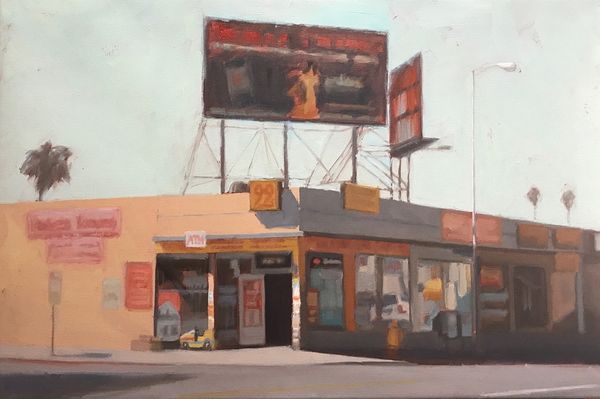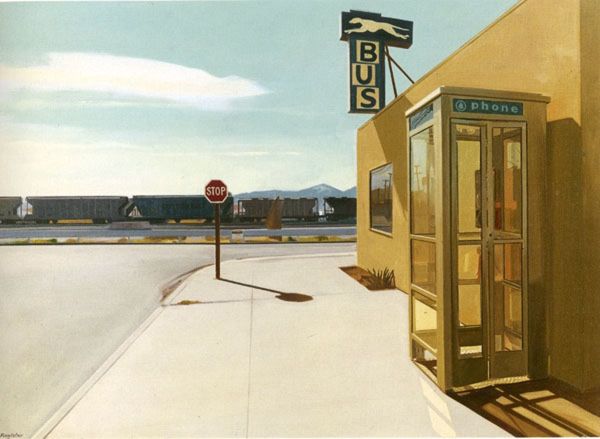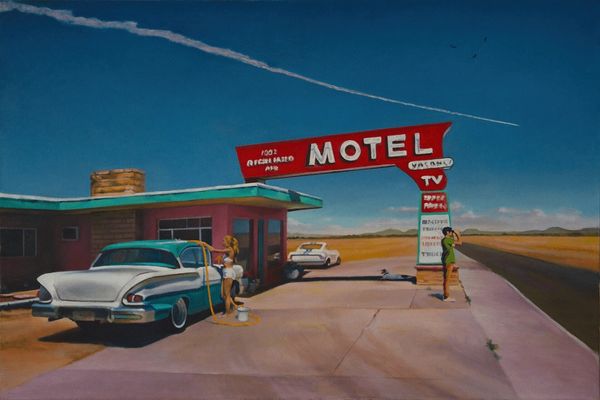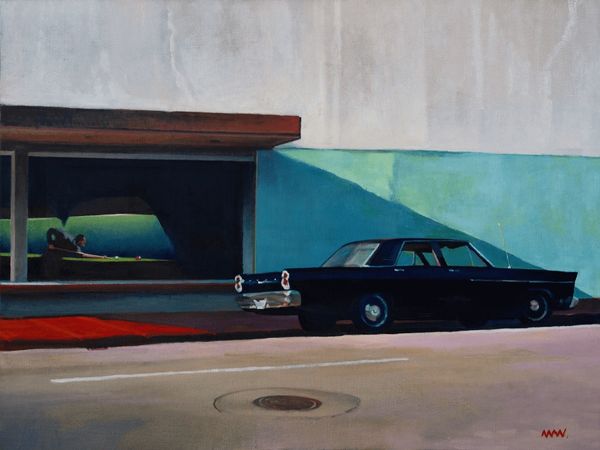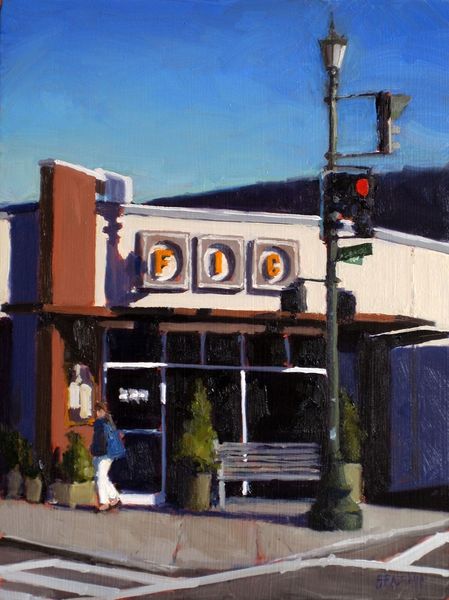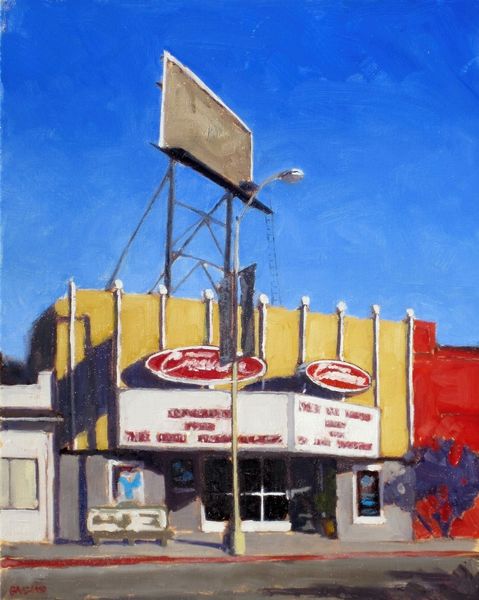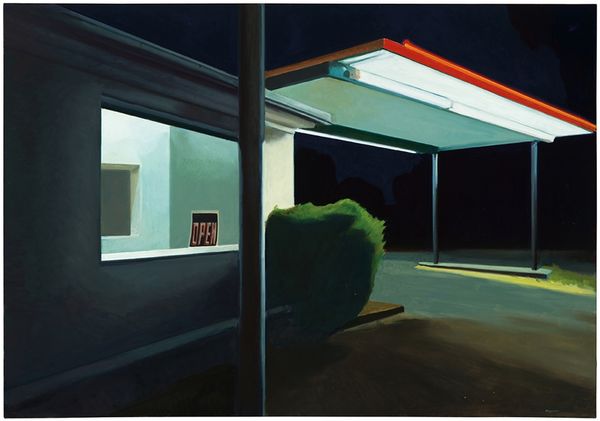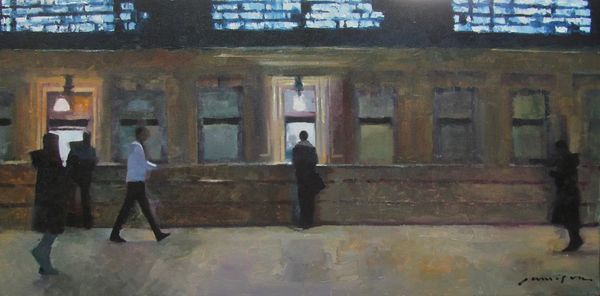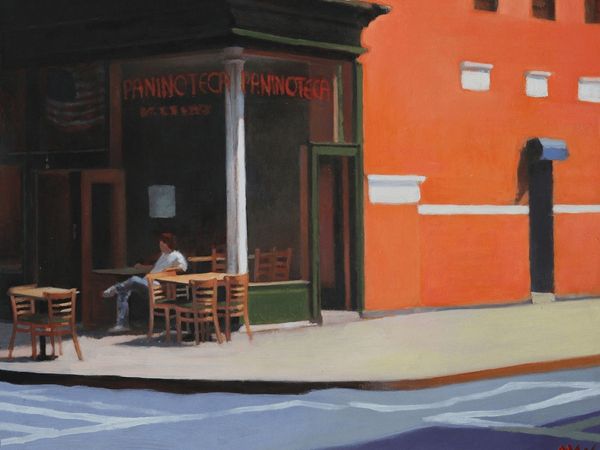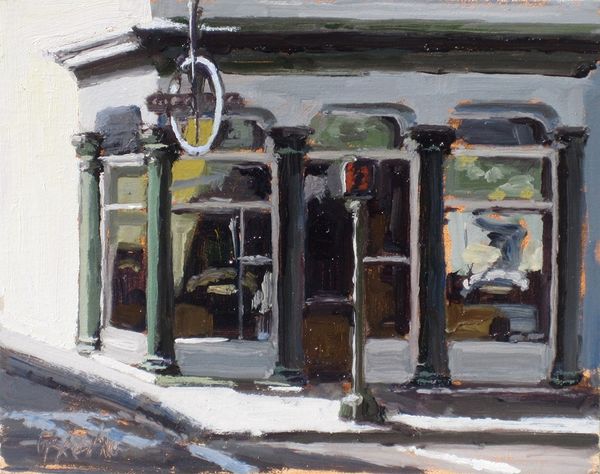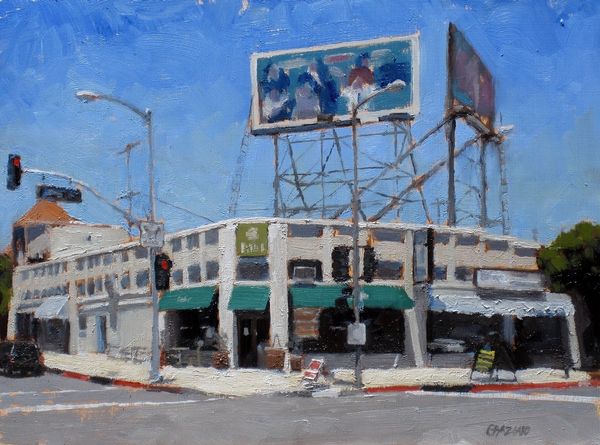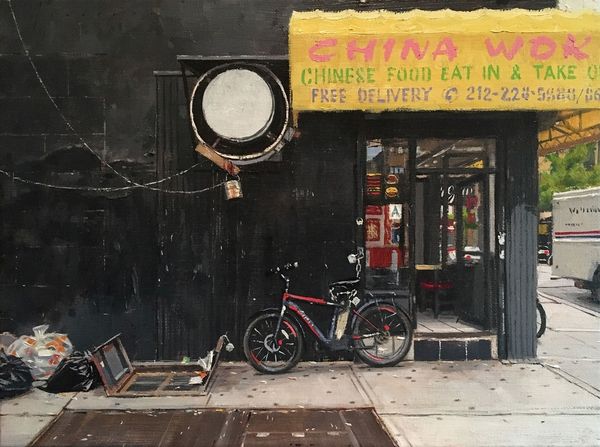
Copyright: Richard Estes,Fair Use
Curator: This is Richard Estes' "Diner," painted in 1971. It exemplifies photorealism. What do you make of it? Editor: I'm struck by its coldness. All the reflective surfaces – glass, chrome, even the polished sidewalk – seem to repel rather than invite. It feels devoid of warmth. Curator: And that coolness speaks directly to Estes’ project, doesn’t it? It’s less about representing the essence of a diner and more about the conditions of labor reproducing photographs into paintings. He used commercial, manufactured images that served specific purposes, embracing reproducibility. Editor: But consider the composition itself. The repeated vertical lines of the telephone booths, the horizontal bands of the diner’s design – it’s a masterclass in geometric abstraction, isn’t it? See how those shapes and lines contribute to a sense of order. Curator: Precisely, though, think about what is being ordered and produced here! What appear to be formal artistic decisions belie how Estes highlighted contemporary commodity culture through paintings—mimicking manufactured images of serial telephone booths outside of a commodity exchange zone of labor! It suggests to me a critical reading of what constitutes artistic process—rather than aesthetic beauty. Editor: I still cannot see any kind of critical statement here! These mirrored and repeated images feel self-contained. Perhaps that is what draws me in and the image's perfection only reinforces it. There is such formal tightness here, the reflective play of light versus dark, an intricate structure and a captivating picture. Curator: It's compelling how he documents urban architecture and infrastructure during that era. Reflect for a moment about how this painting depicts commodity consumption. Think of how a roadside diner enabled social networks through physical telephony in a specific, critical period for cultural production in New York! Editor: I appreciate your emphasizing the labor element, and how Estes made visible an architecture of service; and despite any intentions, I feel invited into a contemplative exercise. Curator: Exactly, and thinking about artistic labor illuminates our engagement with commercial spaces.
Comments
No comments
Be the first to comment and join the conversation on the ultimate creative platform.
